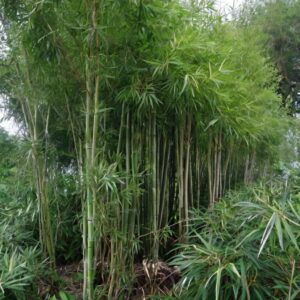
In the realm of botanical wonders, Borinda boliana, commonly known as Himalayan blue bamboo, stands tall, both literally and metaphorically. Its elegant stature, coupled with its serene blue-green hues, makes it a prized possession for garden enthusiasts worldwide. However, the journey from obtaining this bamboo species to witnessing its flourishing presence in your garden demands a meticulous understanding of planting and propagation techniques. In this investigative guide, we delve deep into the realm of Borinda boliana, exploring the best practices for planting and propagating this exquisite bamboo variant.
Understanding Borinda boliana:
Before delving into the intricacies of planting and propagation, it’s imperative to comprehend the essence of Borinda boliana. Native to the eastern Himalayan region, this species thrives in moderate to cool climates, characterized by moist, well-draining soil. Its graceful culms, adorned with delicate foliage, evoke a sense of tranquility, making it a coveted addition to any landscape.
Planting Borinda boliana:
Planting Borinda boliana begins with procuring healthy rhizomes, the underground stems responsible for growth and propagation. Here’s a step-by-step guide to ensure successful planting:
1. Selecting Rhizomes: Opt for robust rhizomes with multiple nodes, indicative of vigorous growth potential. Avoid specimens with signs of damage or disease.
2. Preparing the Site: Choose a location with dappled sunlight or partial shade, shielding the bamboo from harsh afternoon sun. Ensure the soil is fertile, well-draining, and slightly acidic, with a pH level between 6.0 to 6.5.
3. Digging the Hole: Dig a planting hole twice the width and depth of the rhizome, ensuring ample space for root development. Incorporate organic matter like compost or aged manure into the soil to enhance fertility.
4. Planting the Rhizome: Place the rhizome horizontally in the planting hole, ensuring the nodes are facing upwards. Cover the rhizome with soil, leaving the top node exposed, and gently pat the soil to eliminate air pockets.
5. Watering and Mulching: Water the newly planted rhizome thoroughly to settle the soil and provide adequate moisture. Apply a layer of organic mulch, such as shredded bark or straw, to conserve moisture and suppress weed growth.
6. Maintenance: Monitor the soil moisture levels regularly, ensuring it remains consistently moist but not waterlogged. Protect young shoots from strong winds and frost by providing temporary shelter or covering with frost cloth.
Propagation Techniques:
Propagating Borinda boliana allows for the expansion of your bamboo collection or sharing the joy of cultivation with fellow enthusiasts. Here’s how to propagate new shoots through division and transplanting:
1. Dividing Established Clumps: Wait until the bamboo clump has matured, typically after three to five years of growth. Use a sharp spade or shovel to divide the clump, ensuring each division has a healthy rhizome system and several culms.
2. Transplanting Divisions: Select a suitable planting site with similar soil and light conditions as the parent plant. Follow the same planting procedure outlined earlier, ensuring proper spacing between divisions to accommodate their growth.
3. Root Pruning: Before transplanting, trim the roots of each division to stimulate new growth and prevent root-bound issues. Trim the roots with clean, sharp pruners, removing any damaged or circling roots.
4. Watering and Care: Water the transplanted divisions thoroughly after planting to encourage root establishment. Monitor their progress closely, providing supplemental water during dry spells and protecting them from extreme weather conditions.
Tips for Successful Establishment:
Achieving successful establishment and growth of Borinda boliana requires attention to detail and diligent care. Here are some additional tips to ensure your bamboo thrives:
1. Regular Feeding: Apply a balanced, slow-release fertilizer annually in early spring to provide essential nutrients for healthy growth and vibrant foliage.
2. Pruning: Remove any dead, damaged, or overcrowded culms regularly to maintain airflow and prevent disease. Pruning also promotes new shoot production and enhances the overall appearance of the bamboo grove.
3. Containment Measures: Consider installing a rhizome barrier around the planting area to prevent the spread of invasive rhizomes. Alternatively, plant Borinda boliana in large containers to restrict its growth and facilitate easier maintenance.
4. Monitoring for Pests and Diseases: Keep a vigilant eye for signs of pest infestation or disease, such as yellowing foliage, stunted growth, or fungal lesions. Promptly address any issues with appropriate treatments to prevent spread and minimize damage.
In conclusion, mastering the art of planting and propagating Borinda boliana elevates the gardening experience to new heights. By following the outlined techniques and tips, you can cultivate a thriving bamboo sanctuary, replete with elegance and tranquility. Embrace the journey of nurturing Borinda boliana, and witness the mesmerizing beauty it bestows upon your garden landscape.

1 thought on “8 Essential Tips for Planting Borinda boliana Bamboo”